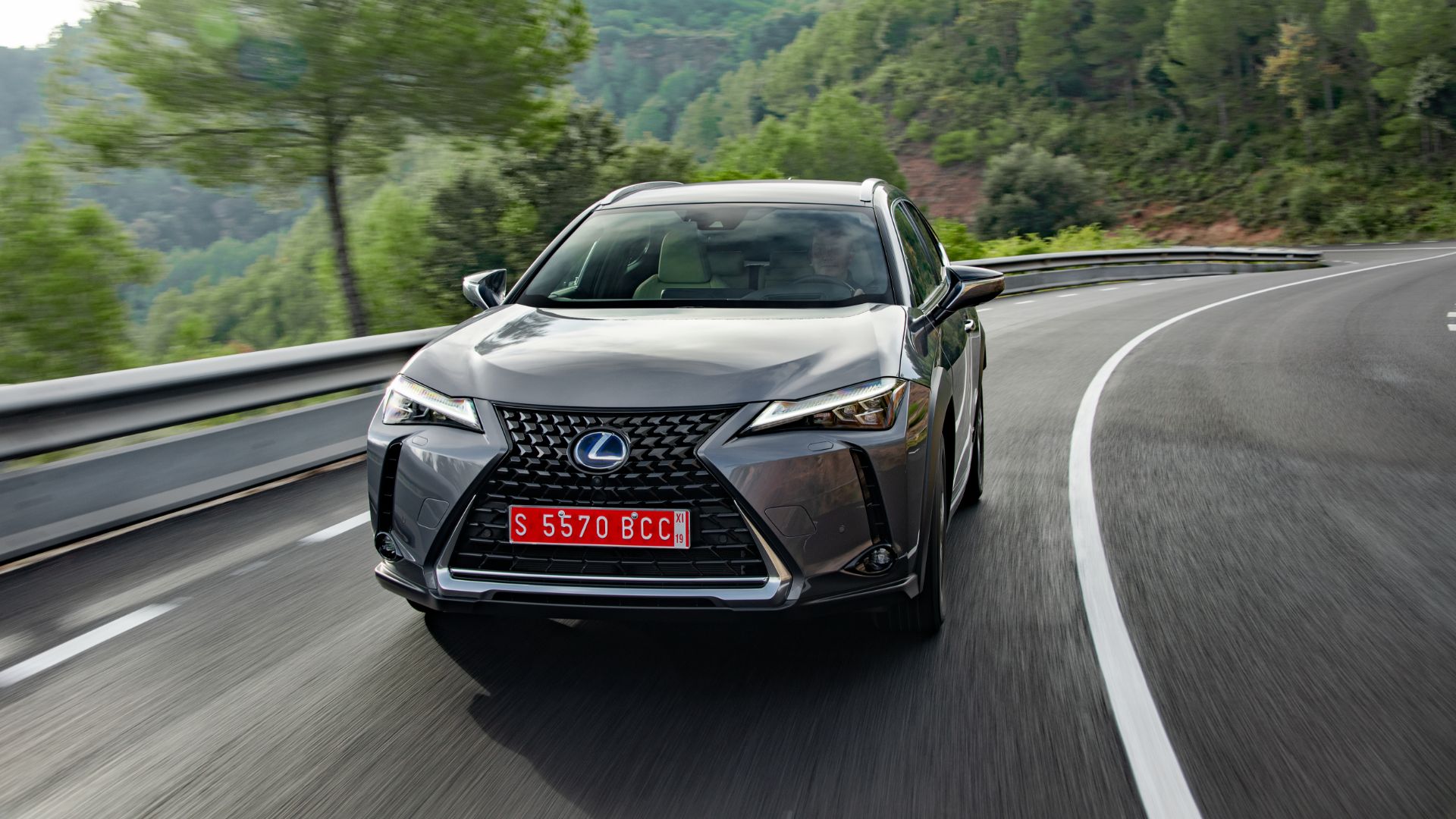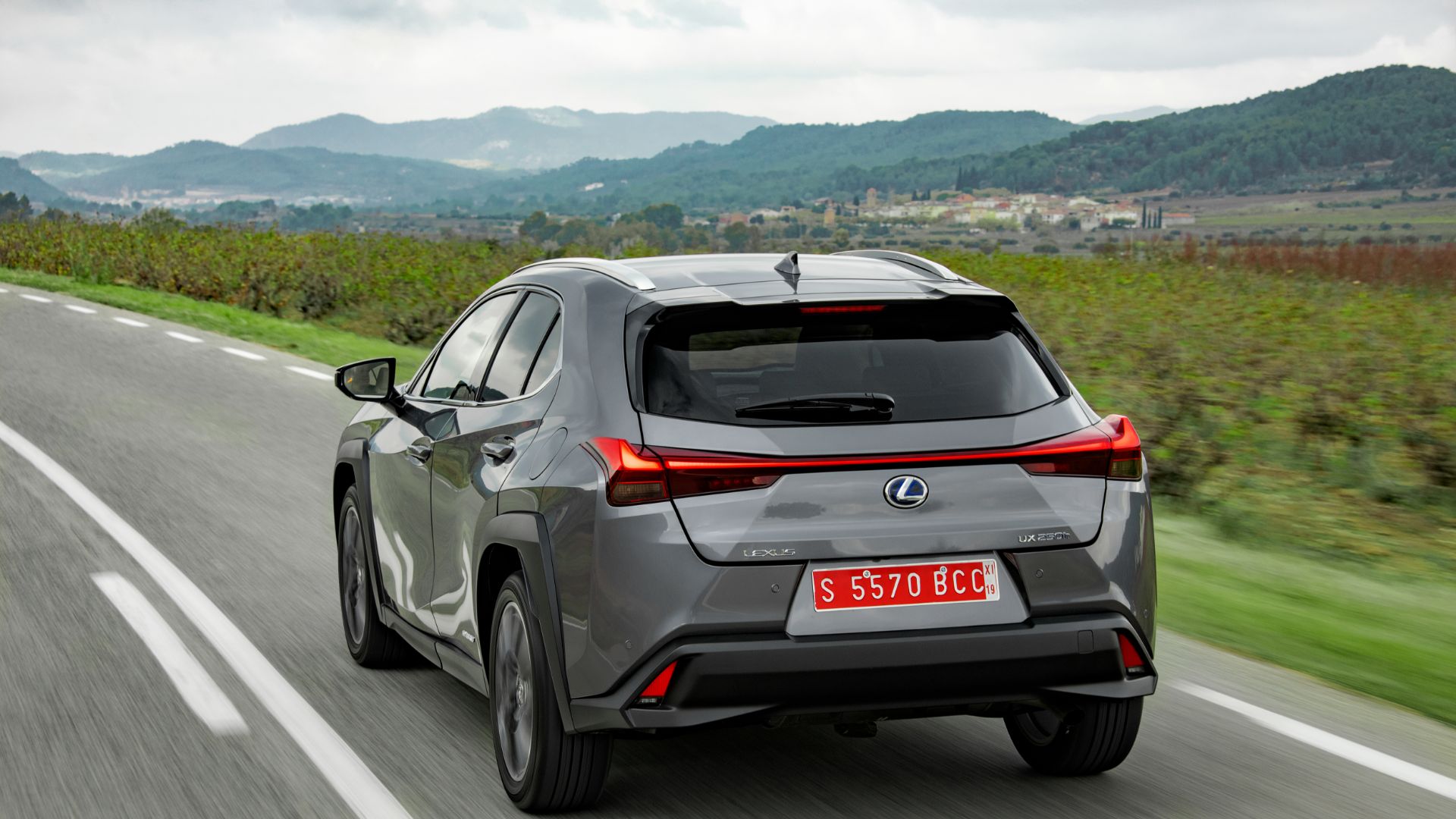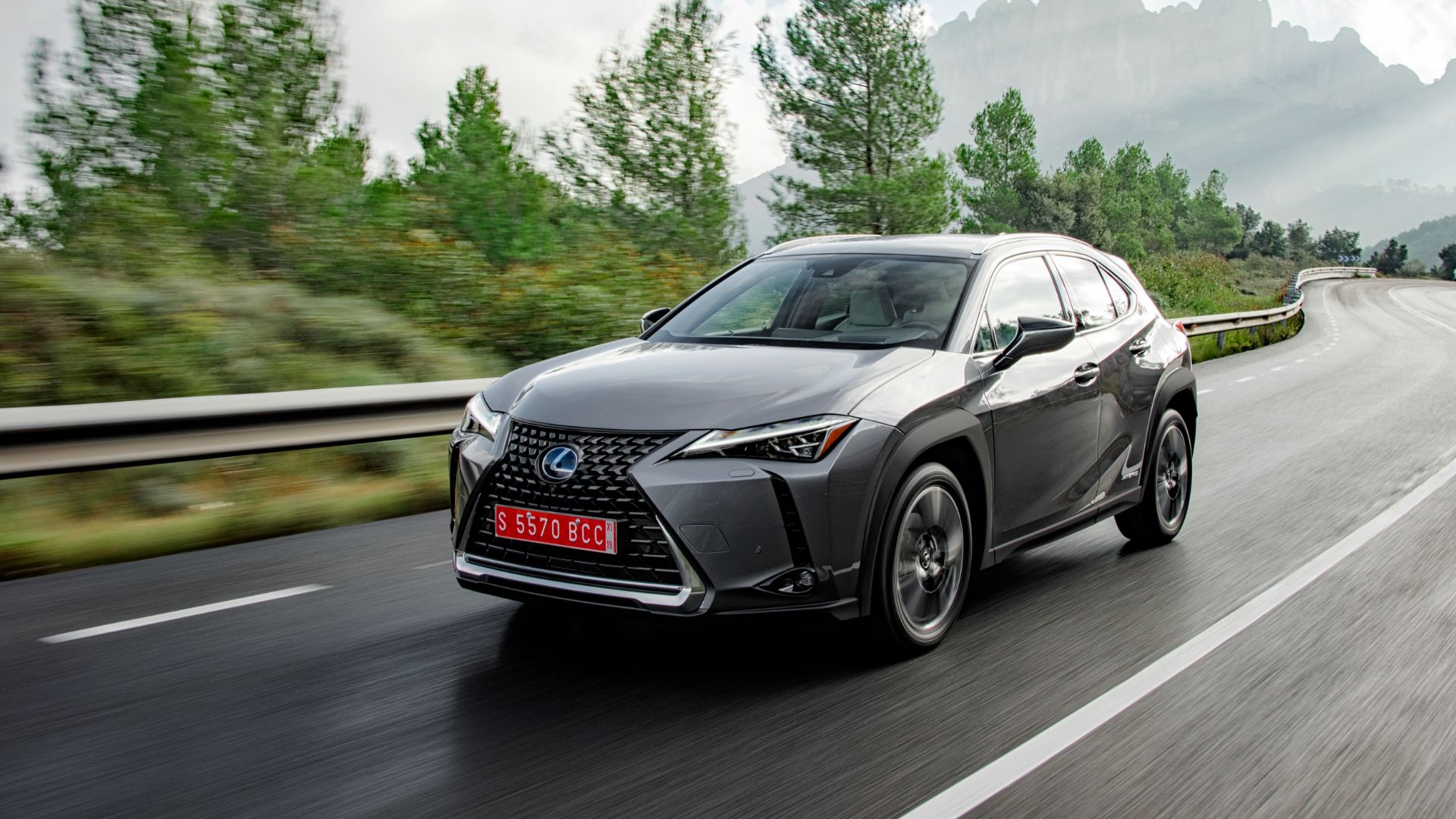 Good things are expensive, we all know that. It’s why we flock to buy Apple products. It’s how Rolex sells watches. And its why the Rolls-Royce is held in such high esteem. No one needs these things, but plenty of us want them.
Good things are expensive, we all know that. It’s why we flock to buy Apple products. It’s how Rolex sells watches. And its why the Rolls-Royce is held in such high esteem. No one needs these things, but plenty of us want them.
How do you grow from ‘everyday’ to desirable? History counts for a lot: look at Rolls and Rolex. Yet Apple, which had already been around for a couple of decades, went from almost zero to hero overnight with the iPhone.
It’s that type of success that Toyota’s top brass aims for with the Lexus brand. Fortune has shined on Lexus in the States, but in Europe they still dream of selling 100,000 cars a year. The new UX is the major part of this ambition to grow.
So the Lexus UX is an SUV?
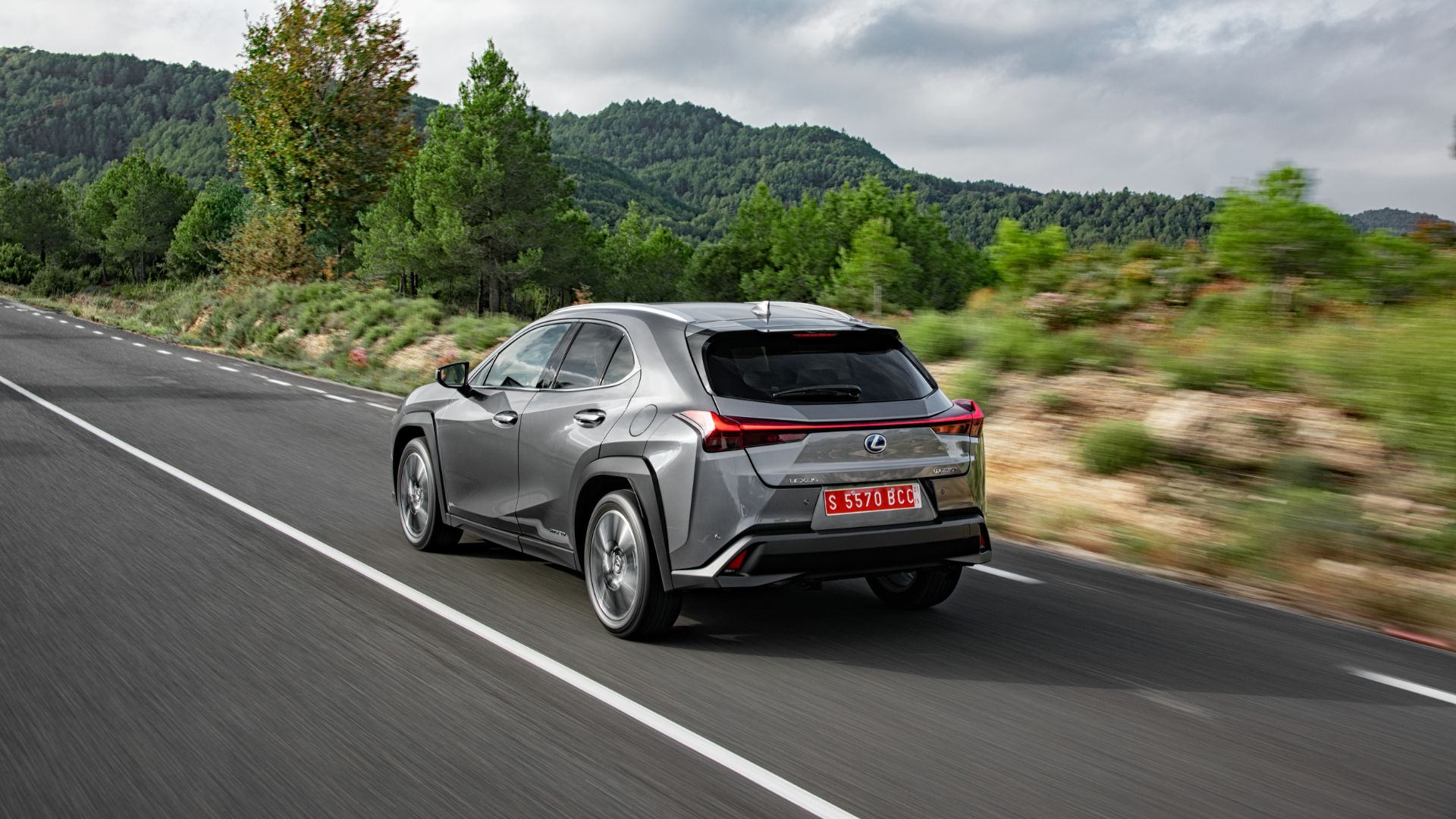
Yes, well… sort of. The trouble with the SUV acronym – which stands for ‘Sport Utility Vehicle’ – is it used to mean a full-blooded 4×4 with some creature comforts. Something like a Land Rover Discovery. Other things that looked like SUVs, but were really just tall cars? They’re crossovers.
Now SUV is the ultimate catchphrase, and woe betide any manufacturer that doesn’t have one in its range. So, led by Peugeot and Citroen, who have few scruples and even fewer proper 4x4s, the SUV tag is game for almost anything on four wheels. Basically, if you want your car to be an SUV, it is. Just call it that and you are a player.
The new Lexus UX thus qualifies as an SUV. The vast majority are likely to be bought with front-wheel drive, but you can get four-wheel drive as a £1,250 option. Brilliantly simple, there’s an electric motor that powers the rear wheels when required. So it can deal with snow and wet grass when the need arises.
Quality counts for a lot
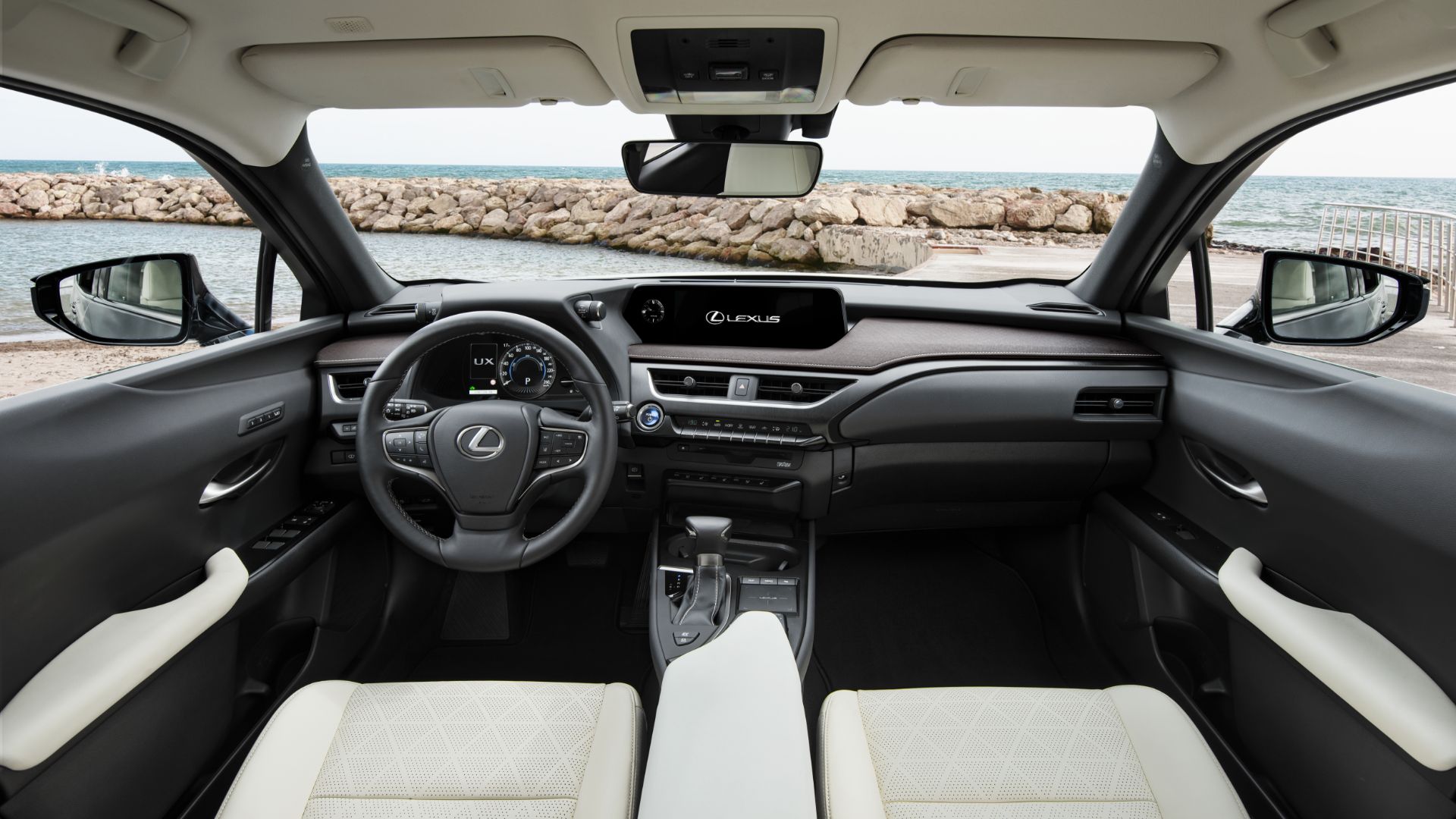
In any customer satisfaction survey you care to look at, Lexus comes out very high – often top. The cars are supremely reliable and, if you do need help, the dealers are great. That’s a damn good reason to buy any car.
Yet to make its cars better than mere Toyotas, Lexus gets a bit anal. For example, neural scientists measured brain waves to create the most pleasing door closing sound. The wipers also stop when you open a door, so you don’t get splashed.
The tightness of the gaps between the doors is paper thin, and you only have to lift the bonnet to admire the neatness of all the pipework. It’s solidly good work. You feel more confident than you might in, say, a Land Rover, that it’s all going to work dependably.
It looks striking, but hardly elegant
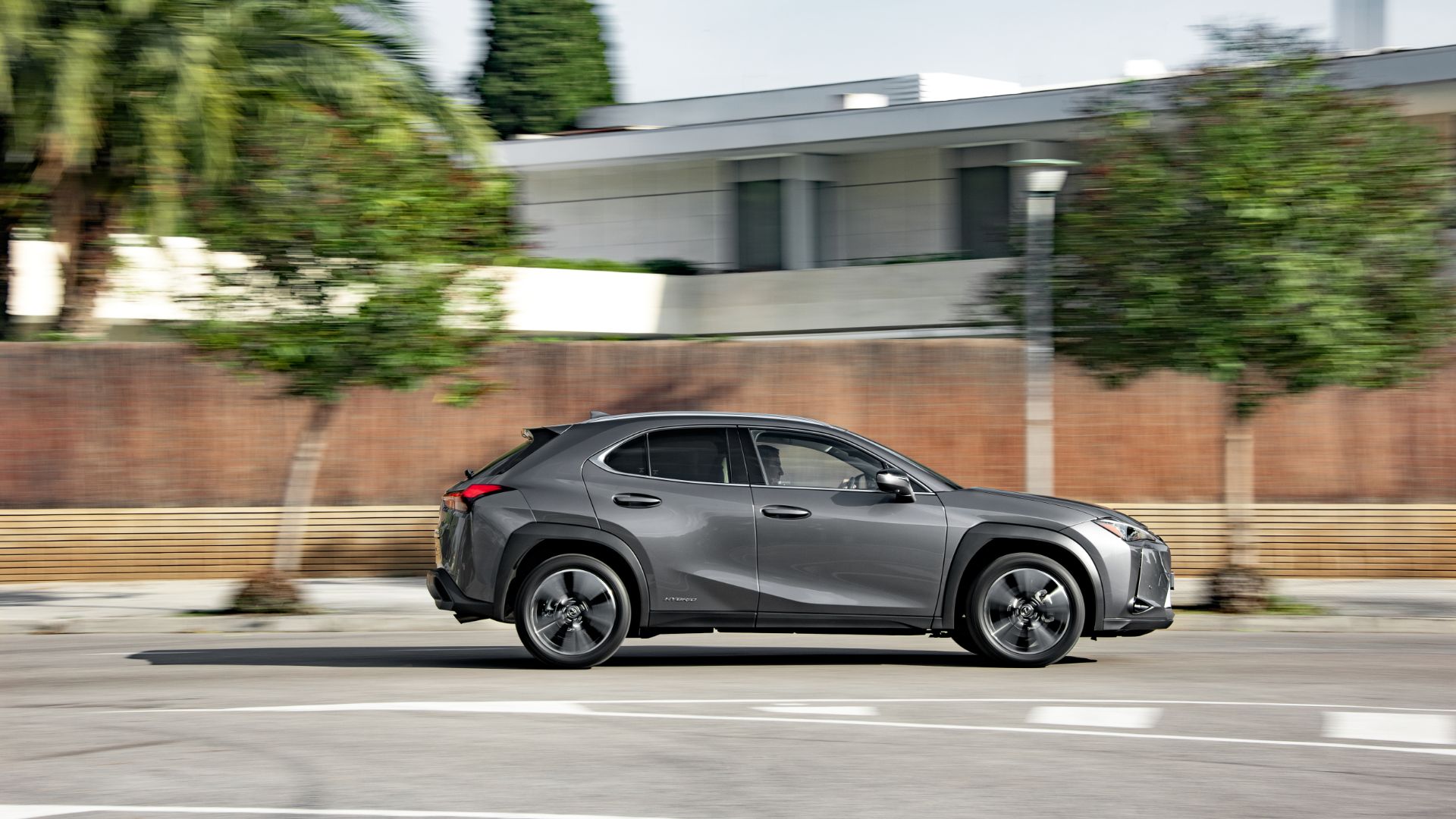
So the Lexus UX seems well-built and is likely to be reliable, but is it really desirable? In the UK, Lexus sales have been on the slow-burn.
Pitched against Audi, BMW, Jaguar and Mercedes-Benz, Lexus has forged its own path rather than facing rivals head-on. Which means a distinctive design dominated by an insanely massive front grille that only a mother could love. Only by sticking a number plate across the middle, to break up this mishmash of chrome squiggles, does it start to look less alarming.
Elegant? I don’t think so. Of course, good design is partly down to individual preference, but the UX is unlikely to be bought by anyone desiring a great looking compact crossover.
What about the X1, Q3, E-Pace, GLA and XC40?
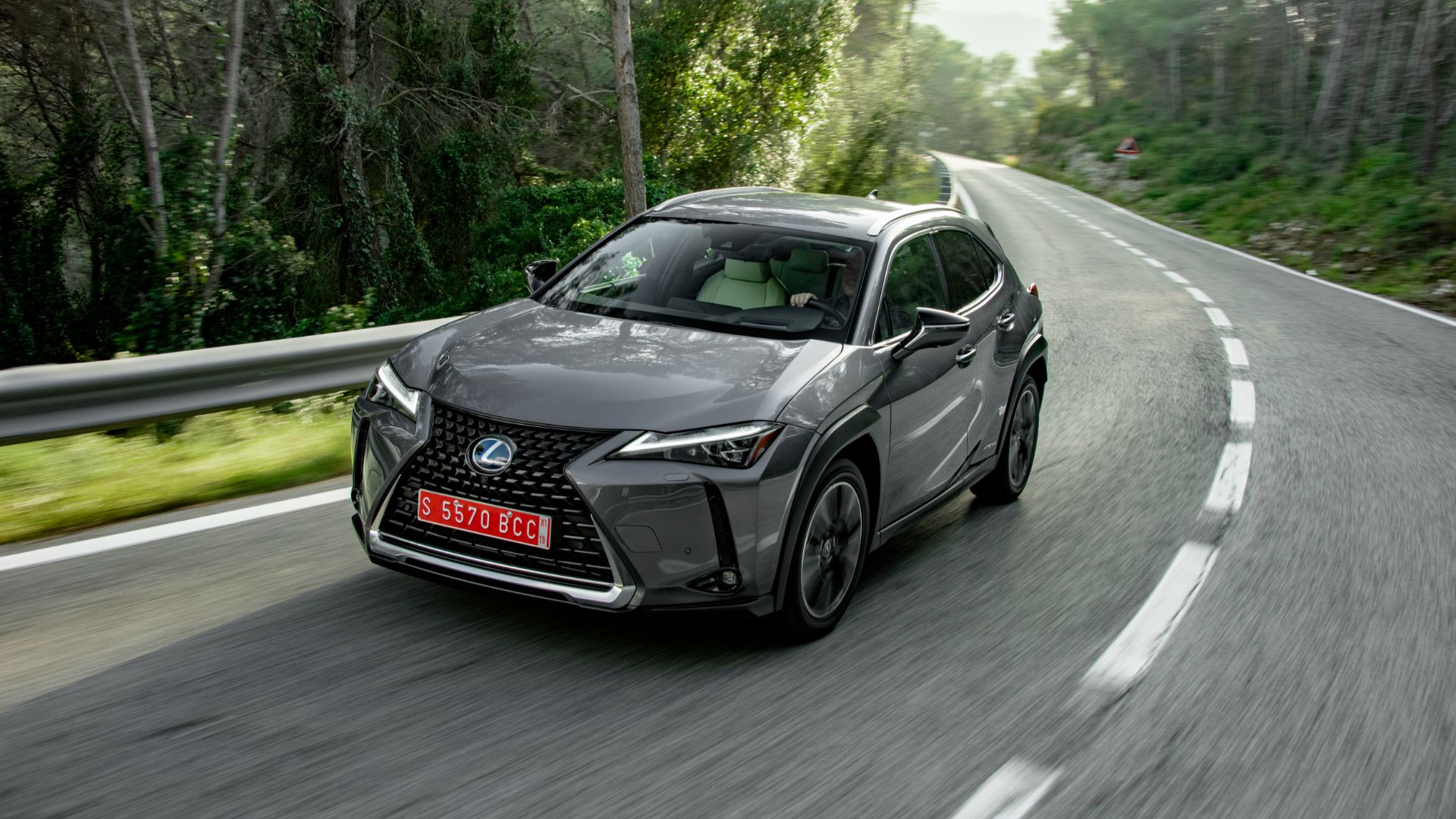
The UX is a direct competitor for compact crossovers from BMW, Audi, Jaguar, Mercedes-Benz and Volvo. Lexus is diving head-first into a busy sector already full of competence. The big difference here, though, is that every UK version of the UX is a petrol-electric hybrid.
And that’s definitely the flavour of the moment. Diesels are fading fast, and petrol engines are too thirsty, but hybrids answer the question that many are asking – without the apparent cost or unknowns of a purely electric car.
Lexus is keen on the term ‘self-charging hybrid’, which is a bit self-serving because it doesn’t have a plug-in version of the UX. No matter, though: this is the technology of the Toyota Prius, honed into its fourth generation. No-one knows better than Toyota and Lexus how to get the best out of a hybrid.
Tell me about fuel economy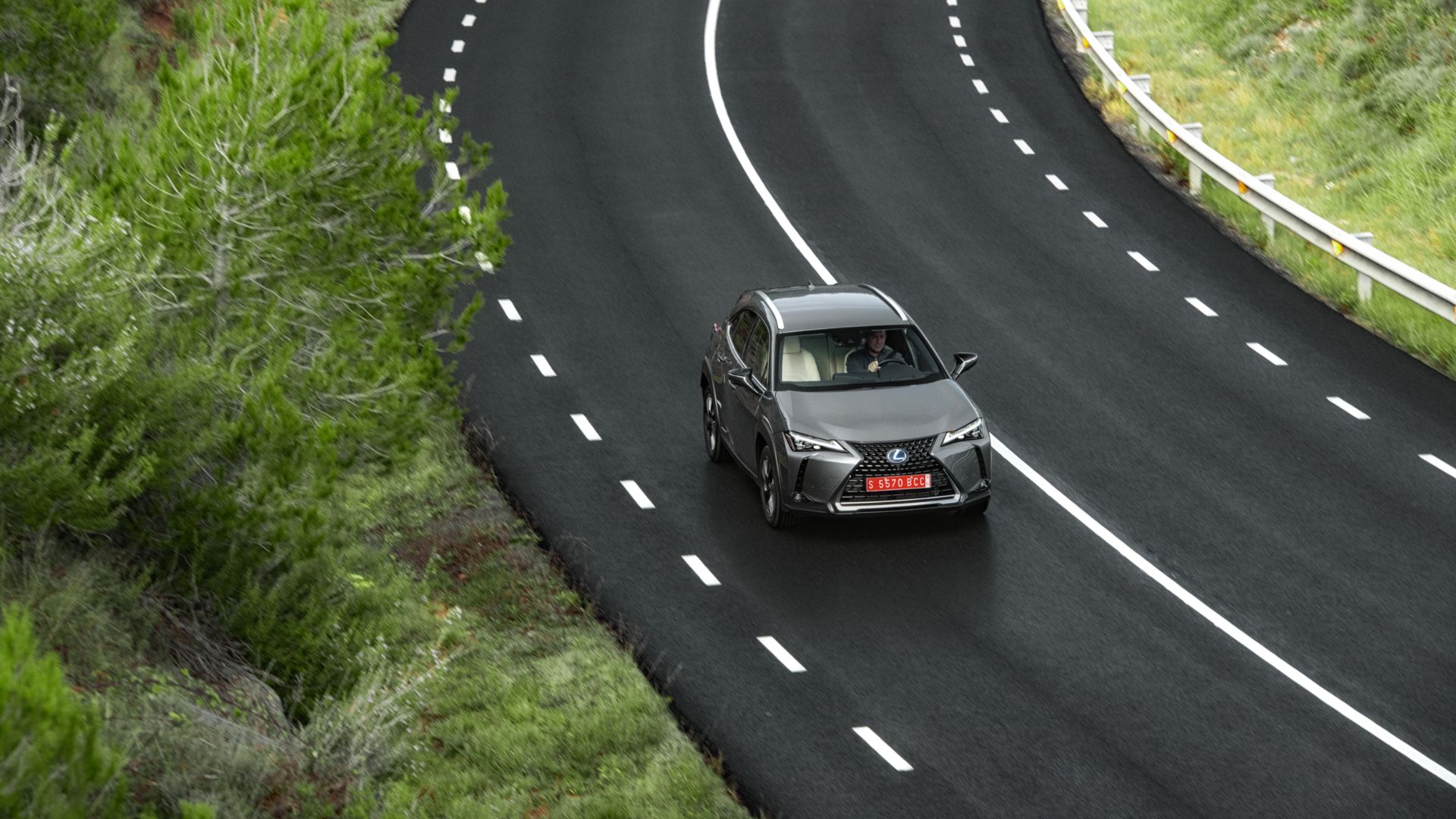
The numbers certainly stack up. You should be able to get close to 50mpg in the front-wheel-drive version, although opting for bigger wheels or the E-Four (4WD) version hits economy a little. The CO2 emissions of the front-wheel-drive UX sneak below 100g/km, which is also an excellent result.
It’s all very easy to live with, too. An automatic transmission is standard, the (all-new) 2.0-litre engine is powerful and there’s extra punch from the battery when you need it. If the battery has a decent amount of charge, the UX will drive away on electric power before the petrol engine chimes in.
You won’t go much more than a mile on the battery alone. You’d need a plug-in hybrid to get 20-30 miles of electric range, and then, of course, you’d need to plug in your car once or twice a day to recharge it.
A 181hp output? Sounds like a hot hatch

It isn’t. There are people at Lexus who’d love you think the UX was a sporting drive, but it doesn’t have the engine refinement at high revs. Also, the CVT automatic gearbox works in a way that discourages getting the most from the car.
That makes what will likely be the most popular version, the UX F Sport, seem slightly incongruous. Yet this doesn’t really matter, because you’ll buy a UX for its refinement around town, relaxed motorway cruising and quiet demeanour.
The ride is also very good: best on the 17-inch wheels that come with the lesser models.
Blending the boundaries
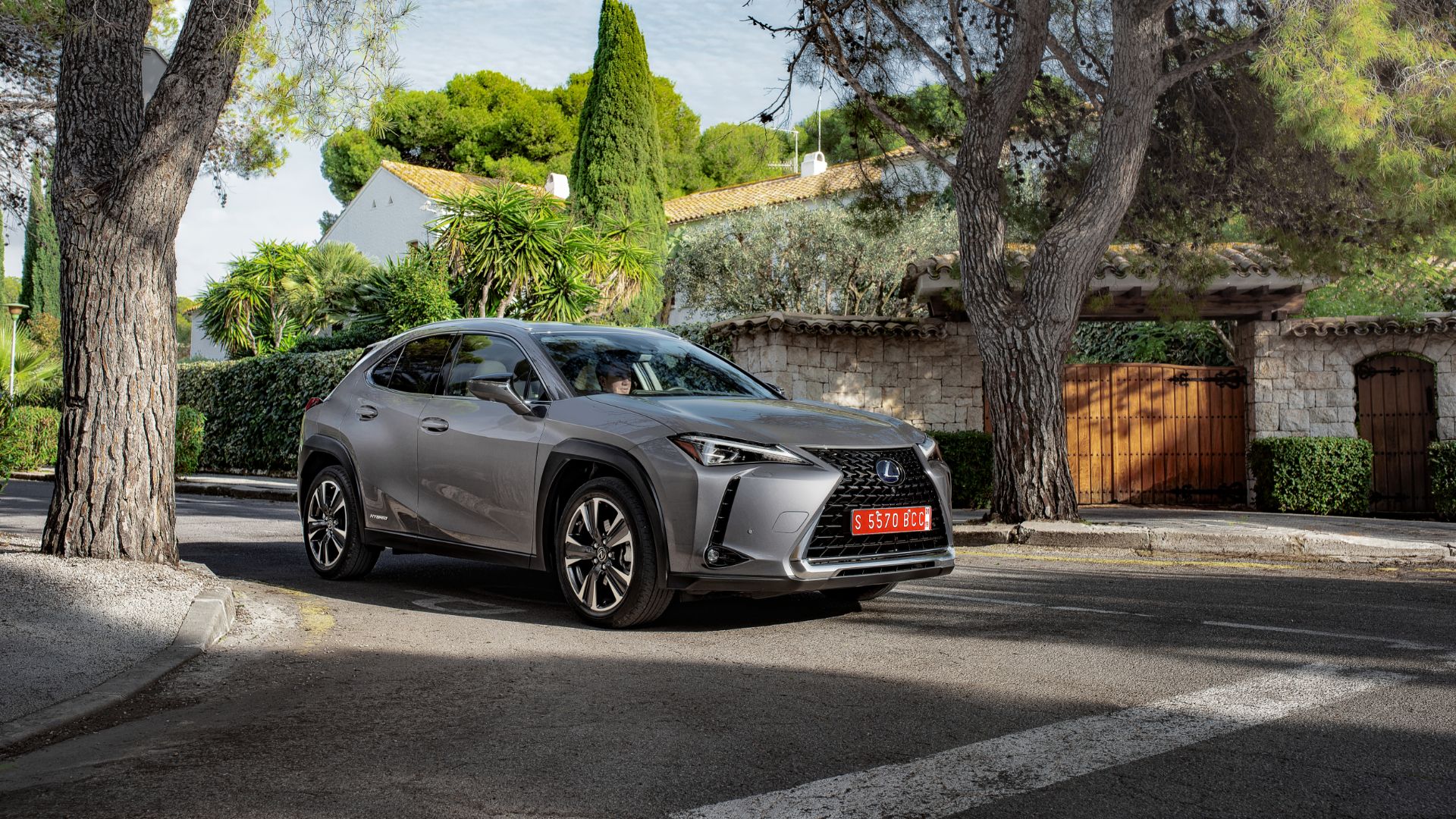
It’s good fun going to a Lexus press conference. They desperately want you to believe their new car has some sort of magical quality that could only come from a deep-rooted Japanese fable. Here’s it’s engawe, a blending of the boundaries between the interior and exterior. Like wide-opening doors from a lounge onto a patio.
Here, though, we – rather obviously – have glass that gets in the way. Maybe it translates better at home.
Snipes aside, the interior, with a facia firmly focused on the driver, is a nice place to be, even though calling it luxurious is stretching things a bit. The seats are very comfortable. In the rear, however, it’s more of a two- than three-seater. Luggage space is a disappointment: more shopping-friendly than weekend-away usable.
How much does the Lexus UX cost?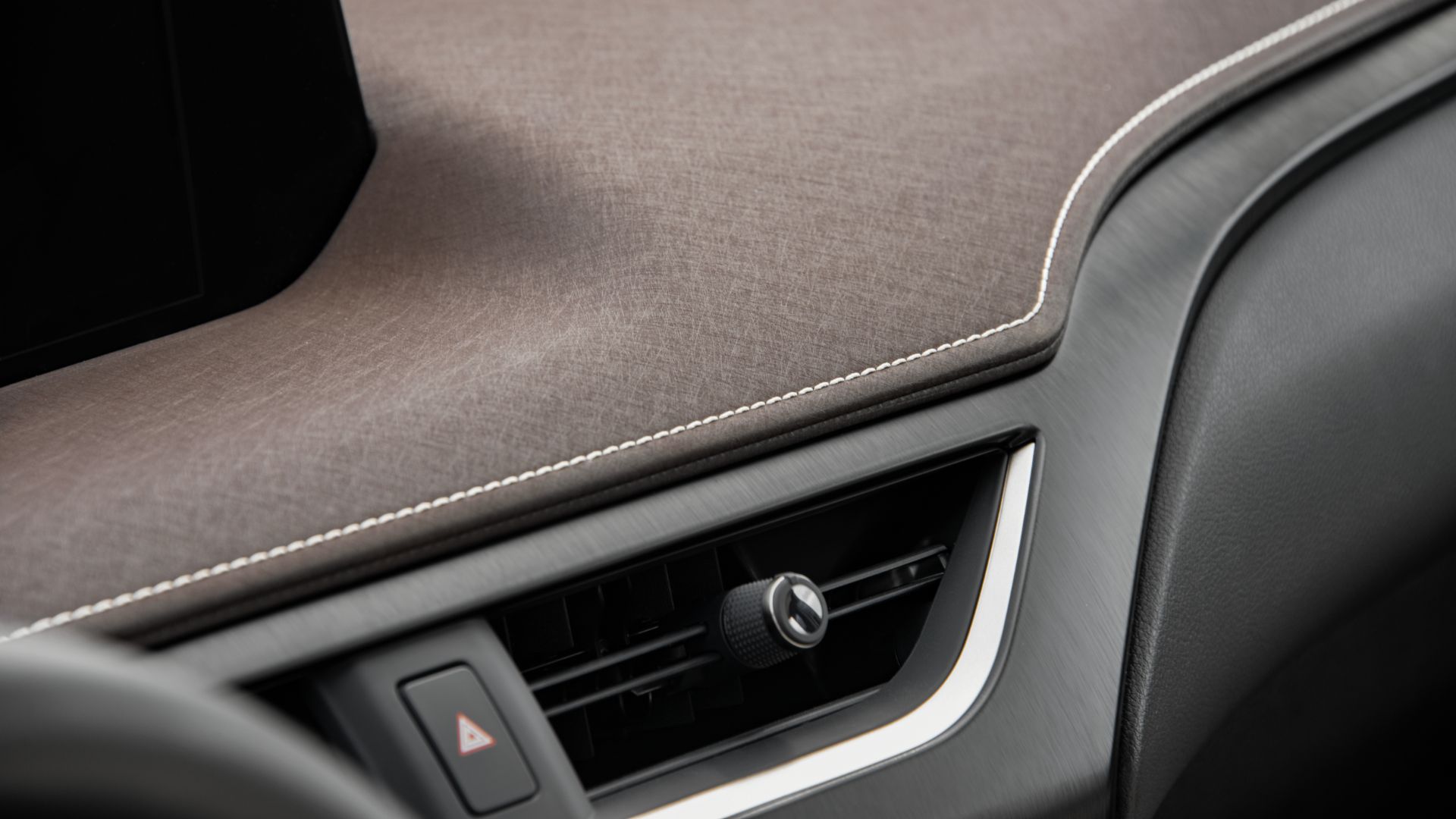
Prices start at a shade under £30,000, rising to just over £40,000. If you want a few choice options, including leather seats, a UX is going to cost a minimum of £35k.
So the Lexus UX is far from a bargain. As a company car proposition, though, it looks a strong option. The CO2 levels are very low for a petrol car, while there is no dastardly diesel penalty to contend with.
Yet the UX has to face competition from an unexpected quarter: electric cars. The latest models from Hyundai and Kia, the Kona Electric and Niro EV, are electric cars that offer the best everyday practicality seen so far, including a range as high as 250 miles, for a touch less outlay than the UX. They are certainly worth considering.
Lexus UX verdict: 4 stars
By moving into a more compact segment of the car market, Lexus is following the well-trodden path of the other luxury brands. Affordable cars inevitably sell in greater numbers.
There’s much to admire about the UX, not least its easy nature and pleasing levels of comfort. The hybrid system is as good as you’ll find in any car, and the ownership costs – whether you buy privately or run it as a business expense – will be very competitive.
For those who aren’t quite ready to go fully electric, it makes a great deal of sense.
Lexus UX: rivals
Audi Q3
BMW X1
Jaguar E-Pace
Mercedes-Benz GLA
Volvo XC40
Lexus UX: specification
• Price: £29,990-£39,100
• Engine: Four cylinder, 1987cc, electric motor
• Drivetrain: Front-engine, front-wheel drive
• Transmission: CVT automatic
• Chassis: Steel with aluminium doors, front wings and bonnet
• Suspension: McPherson struts
• Wheels: 17 or 18 inches
• Power: 181hp@6,000 rpm
• Torque: 140lb ft@4,400rpm-5,200rpm
• 0-62mph: 8.5 seconds
• Top speed: 110mph
• Fuel economy: 46.3-53.3mpg
• CO2 emissions: 94-103g/km
• Length/width/height: 4,495/1,840/1,540mm
• Kerb weight: 1,540-1,680kg
